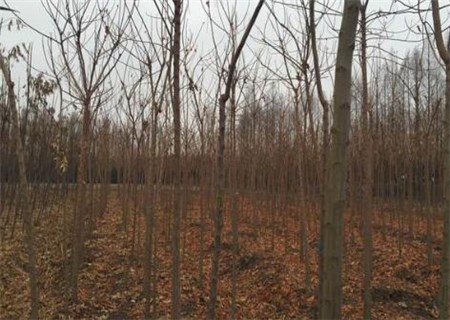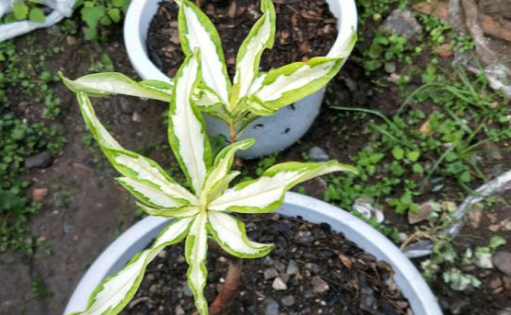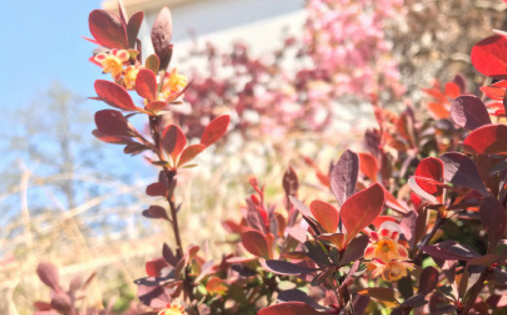What are the planting skills and maintenance knowledge of Euphorbiaceae Chongyang wood? What is the main place of origin? How much is one?
Chongyang wood belongs to Euphorbiaceae. Native to China, native to the Qinling Mountains and south of the Huaihe River Basin, it is commonly cultivated in the middle and lower reaches of the Yangtze River. It is usually cultivated as street trees and garden ornamental trees. Do you know the planting skills and maintenance knowledge of Chongyang wood? What is the main place of origin? How much is it per tree? At the Nanjing nursery, we learned that the breast diameter is 35 yuan for 5 cm Chongyang wood, 60 yuan for 7 cm Chongyang wood, 180 yuan for 9 cm Chongyang wood, 280 yuan for 11 cm Chongyang wood, 550 yuan for 13 cm Chongyang wood and 800 yuan for 15 cm Chongyang wood.

1. Planting skills and maintenance knowledge of Chongyang wood
Planting skills of Chongyang wood:
1. Land selection and preparation
Nursery land should choose plots with convenient transportation and irrigation conditions. Starting from the land selection and preparation, the management can effectively improve the survival rate of Chongyang wood. Although the requirements of Chongyang wood on the environment and soil are not high, in order to better cultivate improved varieties, we should choose plots that are leeward to the sun and the soil is more fertile. We should pay attention to the smooth drainage of the planting area, and it is best to choose the soil with deeper cultivation layer. Try to choose a place free of diseases and insect pests and flat terrain. Before planting Chongyang wood, manure should be selected for soil preparation to protect the base fertilizer, which can increase the soil temperature, ensure that the soil is more fertile and promote the germination of Chongyang wood more quickly. The selection of Chongyang wooden nursery should pay attention to the choice of soil thickness of more than 40 cm and the best pH value of 7.
2. Collecting and selecting improved varieties
When selecting the seeds of Chongyang wood, it should be noted that the seeds of Chongyang wood mature from September to November, and the seeds of Chongyang wood are reddish brown. During this period, we should pay more attention to the observation of Chongyang wood and try our best to choose those who grow well. Chongyang wood without rotten leaves and strong resistance is used as the mother tree, so the selected Chongyang wood species will also have better resistance and more likely to mature. After the seeds are taken off and soaked in water for a period of time, the fruit is rubbed in coarse sand, then washed with clean water, dried in the shade, and when the seeds are collected, it should also be noted that the preservation of Chongyang wood seeds should be air-dried or mixed into wet storage of sand. Another way to collect seeds is to dry them directly in a cool place and add peel to dry storage directly. How to choose the way to collect should be chosen according to the different conditions of different places.
3. Treatment of land before sowing
Chongyang wood should be ploughed in autumn, the planting depth should be 25 cm 30 cm, combined with soil preparation, flat rake fine, low bed before sowing, bed width 1.2 cm 1.5 m, border stem bottom width 30 cm, top width 10 cm, high position 15 cm, length should be flexibly selected according to different topography, areas with abundant precipitation should pay attention to making high bed. After the completion of the nursery bed, attention should be paid to disinfecting the soil of the nursery bed to reduce the possibility of soil carrying pests and viruses. The method of soil disinfection is to use formalin 50ml / m2, diluted with water and sprayed before sowing. It should be covered with film before sowing to reduce ventilation and lift the film a week before sowing.
4. Sowing seeds at the right time
Field strip sowing is generally used to raise seedlings. In the middle of March, the seedbed was disinfected with 50% carbendazim 800x solution before sowing, and when the radicle of the seed reached 1cm, the seed began to sow. When sowing, cut off part of the radicle, strip sowing according to row spacing 20cm, plant spacing 9cm, sowing amount is 30.0~37.5kg/hm. After sowing, cover the 0.5cm thick fine soil, soak through the water, and build a 2m high 90% sunshade to protect its seedlings from sunburn.
The sowing row spacing is about 20cm and the sowing amount per mu is 2~2.5kg. The covered soil is about 0.5 cm thick and covered with grass. The seedlings were unearthed 20-30 days after sowing, and the germination rate was 40-80%. The height of one-year-old seedlings is about 50cm, and the highest is more than 1m. The lower part of the main stem of the seedling is easy to grow lateral branches, which should be cut off in time to make it branch at a certain height. Transplanting should be carried out with soil balls when the buds germinate, so that the survival rate is high.
5. Transplanting and transplanting seedlings
The seedlings began to be unearthed 20-30 days after sowing, and the germination rate was about 70%. When the seedlings grow to 3 true leaves, the seedlings should be carried out in overcast and rainy days, the seedlings should be small and big, the inferior leaves should be removed, the quality should be removed, the density should be sparse, sufficient light should be ensured, and attention should be paid to the prevention and control of diseases and insect pests. The row spacing of transplanting seedlings is 20cm × 50cm. On cloudy and windless days.
Maintenance and management of Chongyang wood:
After Chongyang wood seedlings are unearthed, attention should be paid to loosening the soil and removing weeds, and attention should be paid to interseedling in order to ensure the survival rate and the nutrition of the seedlings. In fertilization, we should pay attention to the application of organic fertilizer, maintain soil fertility, the use of any kind of fertilizer should be high-temperature fermentation, reduce the fertilizer carrying bacteria or parasite eggs, as far as possible to meet the health standards. The water supply should also be careful not to get too wet, but at the same time to maintain the humidity of the air. Chongyang seedlings are more fragile, so in the water supply and sunlight should grasp a certain degree, especially intense sunlight should pay attention to pull up the sunshade net for shading. Weeding work should also be careful not to harm the seedlings. The Chongyang wood should focus on the control of the Chongyang wood spot moth, and the solution is to select the higher terrain in the nursery, prevent stagnant water, dig drainage ditches, or sow early and apply sufficient basal fertilizer to make the seedlings grow strong.
Colonization
When the saplings grow to about 2m, they can be planted and can be used for street, highway and garden greening. Soil balls should be set up, bandaged, pruned and pruned before planting, so as to keep the trunk of the seedlings straight, easy to transport and prevent damage to the seedlings. The planting time is generally chosen around Arbor Day every year to the end of Ching Ming Festival. The transplanting of fixed trees must be in accordance with the requirements of transplanting big trees in order to ensure the high survival rate of transplanting. At the end of planting, it is necessary to strengthen the management of watering, topdressing, lodging and pest control, especially the control of Plutella xylostella in Chongyang. The specific control methods are as follows: in general, the peak period of the 2nd and 3rd instar larvae of Plutella xylostella appears from the beginning of July to July 15, which can be controlled once before and after July 5, and the second time after 5-7 days. It can be sprayed in a large area with 1000 times solution of 25% thiazuron type 3 B or 1200 times solution of 3% phenoxarb suspension or 1500 times solution of 1% methamyl salt.
2. Where is the main producing area of Chongyang wood
It is commonly cultivated in the middle and lower reaches of the Yangtze River from the south of Qinling Mountains and Huaihe River Basin to the north of Guangdong and Guangdong provinces. It is usually cultivated as street trees and garden ornamental trees. A small amount of cultivation has been introduced in North China. Chongyang wood likes light, but also slightly resistant to shade, resistant to drought and barren, but also resistant to water and moisture and has a strong ability to resist cold.
Time: 2019-03-16 Click:
- Prev

What is the hydroponic method of the original perianth subclass Phnom Penh Daphne? Is it poisonous? How to raise it in winter?
Phnom Penh Daphne (Latin name: Daphneodora) is a variety of Daphne odora, so what is the hydroponic method of Phnom Penh Daphne? Is it poisonous? How to raise it in winter? It is understood that before hydroponics, Phnom Penh Daphne should first choose utensils that can put branches. It is better to have more space and enough oxygen, which is conducive to rooting.
- Next

How to plant the seeds of Berberis purpurea? How do you breed? What are the medicinal effects?
Purple leaf Berberis is very adaptable, like the light environment, but also resistant to semi-shade, so how to plant purple leaf Berberis seeds? How do you breed? What are the medicinal effects? It is understood that purple leaf Berberis originated in Japan, the south of Northeast China, North China and Qinling Mountains. At present, it is cultivated in all major cities in China.
Related
- Fuxing push coffee new agricultural production and marketing class: lack of small-scale processing plants
- Jujube rice field leisure farm deep ploughing Yilan for five years to create a space for organic food and play
- Nongyu Farm-A trial of organic papaya for brave women with advanced technology
- Four points for attention in the prevention and control of diseases and insect pests of edible fungi
- How to add nutrient solution to Edible Fungi
- Is there any good way to control edible fungus mites?
- Open Inoculation Technology of Edible Fungi
- Is there any clever way to use fertilizer for edible fungus in winter?
- What agents are used to kill the pathogens of edible fungi in the mushroom shed?
- Rapid drying of Edible Fungi

